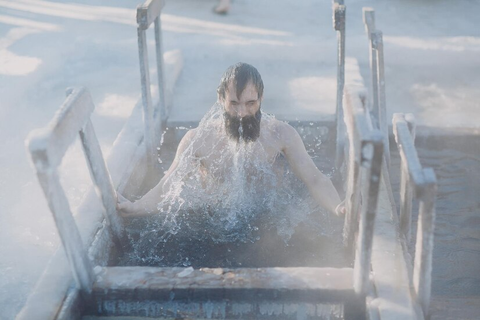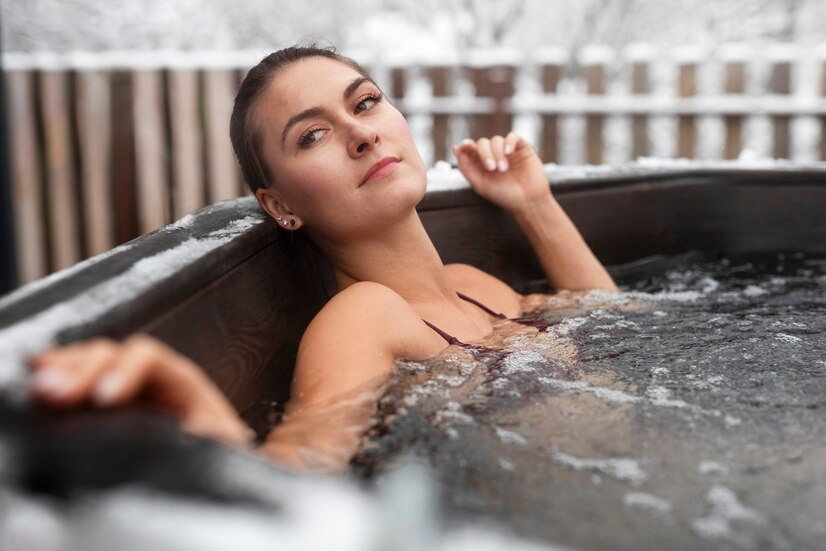Key Takeaways
· Gradual exposure is key when starting cold plunge therapy for safety and comfort.
· Always monitor water temperature and have supervision, especially during your first cold plunge experiences.
· Cold plunge therapy health benefits include reduced inflammation, enhanced circulation, and increased mental alertness.
· Using a cold plunge tub for home requires emergency supplies and time limits for safe sessions.
· Consistent cold plunge routines, paired with healthy post-session recovery, enhance well-being and immune support.
Cold plunge therapy, which is also called "ice bathing," is becoming more popular among athletes, health buffs, and people who want to relieve pain and stress naturally.
Cold plunges are good for you in many ways, but they can be dangerous if you don't follow the right safety rules. This detailed guide will go over the basics of cold plunge therapy, focusing on important safety measures and best practices to make sure you have a positive and safe experience.
Foundations of Cold Plunge Therapy
During cold plunge therapy, the body is submerged in water that is very cold, usually between 10 and 15 degrees Celsius (50 to 68 degrees Fahrenheit). When you jump into cold water, you trigger your body's own nervous system. This sets off a chain of physiological responses that have a number of health benefits, such as:
· Cold plunges can help athletes and people who have just finished a hard workout by reducing inflammation and muscle pain.
· Cold exposure lowers the body's temperature, which can help people heal more quickly and lower their risk of getting sick from the heat.
· By causing the release of neurotransmitters like noradrenaline, cold plunges can improve mental alertness and attention.
· The cooling effect of cold plunges before bed may help you relax and get a better night's sleep.
· Cold exposure may boost the immune system by increasing the number of white blood cells and improving blood flow.
· Endorphins are released during cold plunges, which makes people feel good and upbeat.
· Cold therapy can help people heal faster from accidents by lowering inflammation and encouraging tissue repair.
· Cold plunges cause blood vessels to narrow and then open up again, which is good for blood flow and heart health.
· Cold contact can speed up metabolism because the body has to work harder to keep its core temperature steady.
· Immersion in cold water can close pores, lower inflammation, and enhance skin health generally.
However, it's important to remember that cold plunge therapy isn't right for everyone. People who already have health problems, like heart disease, diabetes, or Raynaud's syndrome, should talk to their primary care doctor about cold plunge therapy before they do it.
Tip: If you want to enjoy cold therapy at home safely and conveniently, consider using a cold plunge tub for home designed for personal wellness and easy installation.
Critical Safety Measures for Cold Plunges

Follow these safety rules to get the most out of cold plunge therapy with the least amount of risk:
1. Gradual exposure: People who are just starting out should get used to the colder water over time. To build up your tolerance and confidence, start with shorter sessions and warmer water.
2. Supervision: You should always do cold plunge therapy with someone watching you, especially for the first few rounds. Having someone close makes sure that you can get help right away in an emergency.
3. Get ready: Do some small workouts, stretch, or dry brush your muscles to warm them up before you go into the cold plunge. Wear the right clothes, like swimwear, a hat, gloves, and socks, to protect tender areas as well.
4. Checking the temperature: Check the cold plunge's temperature often to make sure the water stays the same temperature throughout the practice. Hypothermia could become more likely if the water temperature changes quickly.
5. Controlling your breathing: To avoid hyperventilation and panic attacks during cold plunge therapy, practice controlling your breathing methods like diaphragmatic breathing.
6. Emergency supplies: Have emergency supplies like blankets, towels, hot drinks, and first aid kits on hand so that you can treat hypothermia or shock signs as soon as you get out of the cold plunge.
7. Time limit: Decide how long each cold plunge exercise can last. Most people can handle 1 to 15 minutes, but it depends on their fitness level and tolerance.
8. Recovery time: After a cold plunge practice, give yourself enough time to recover. To get your body temperature and blood flow back to normal during this time, drink warm water, eat healthy food, and rest.
For more guidelines, see How to Create a Cold Plunge Routine.
Tip: To maximize home cold plunge system benefits, set up your system in an accessible, safe area and follow reliable recovery practices post-plunge.
Best Practices for Cold Plunge Therapy
Besides taking safety precautions, the following best practices can also make cold plunge therapy work better overall:
1. Consistency: Going for regular cold plunges helps build resiliency and makes the body better at handling cold stress.
2. Attitude: Be aware of how you feel about cold plunge therapy. To clear your mind and feel more balanced, focus on the present moment, take deep breaths, and accept the pain.
3. Staying hydrated: Drink plenty of water before, during, and after cold plunge therapy to replace minerals that you lose and ease muscle cramps.
4. Food: To help your body recover quickly from cold plunge therapy, eat a varied diet full of antioxidants, vitamins, minerals, and healthy fats.
5. Cross-training: Do cold plunge therapy along with other types of exercise, like yoga, meditation, or strength training, to improve your overall health and avoid getting hurt.
A common question is the cold plunge vs ice bath for recovery, as both are used for muscle recovery. Cold plunges often involve more controlled water temperatures and longer immersion times compared to traditional ice baths, which use ice cubes and tap water.
For further safety guidelines and potential risks, refer to Ice Bath Hazards and Safety Practices You Should Beware of.
Conclusion
In terms of promoting health and happiness, cold plunge therapy shows great promise. You can get the most out of cold plunge therapy while lowering your risk of harm by following important safety rules and best practices.
Keep in mind that self-care, patience, and persistence are important as you start cold plunge therapy if you want to see long-term success and results.
Sun Home makes the world's best home saunas and cold plunges. Browse our site to learn more! Reach out today and find out more from our Cold plunge experts.
FAQs
How long should you stay in a cold plunge?
For most people, 5 to 10 minutes is optimal. Beginners should start at 1 to 2 minutes and increase gradually as their tolerance builds. Always monitor your body’s responses and exit immediately if you feel uncomfortable or overheated.
What are cold plunge benefits for muscle recovery?
Cold plunges help constrict blood vessels and reduce inflammation, speeding up muscle recovery after exercise. The quick temperature change can also decrease soreness and improve circulation, making it a popular choice for athletes and fitness enthusiasts.
Can you use cold plunge therapy every day?
Daily use is possible for some, but most experts recommend 2–3 sessions per week. This way, the body has time to adapt, and you reduce risks of prolonged exposure.
Do you need a sauna with your cold plunge tub?
Not necessarily, but having access to a sauna can help with the warm-up and recovery process before and after plunging. Both therapies are beneficial but should be practiced with safety in mind.
Are home cold plunge systems safe for children?
No, cold plunge therapy is not recommended for children due to risks of hypothermia and other temperature-related complications. Always consult a pediatrician before considering any cold exposure therapy for minors.






